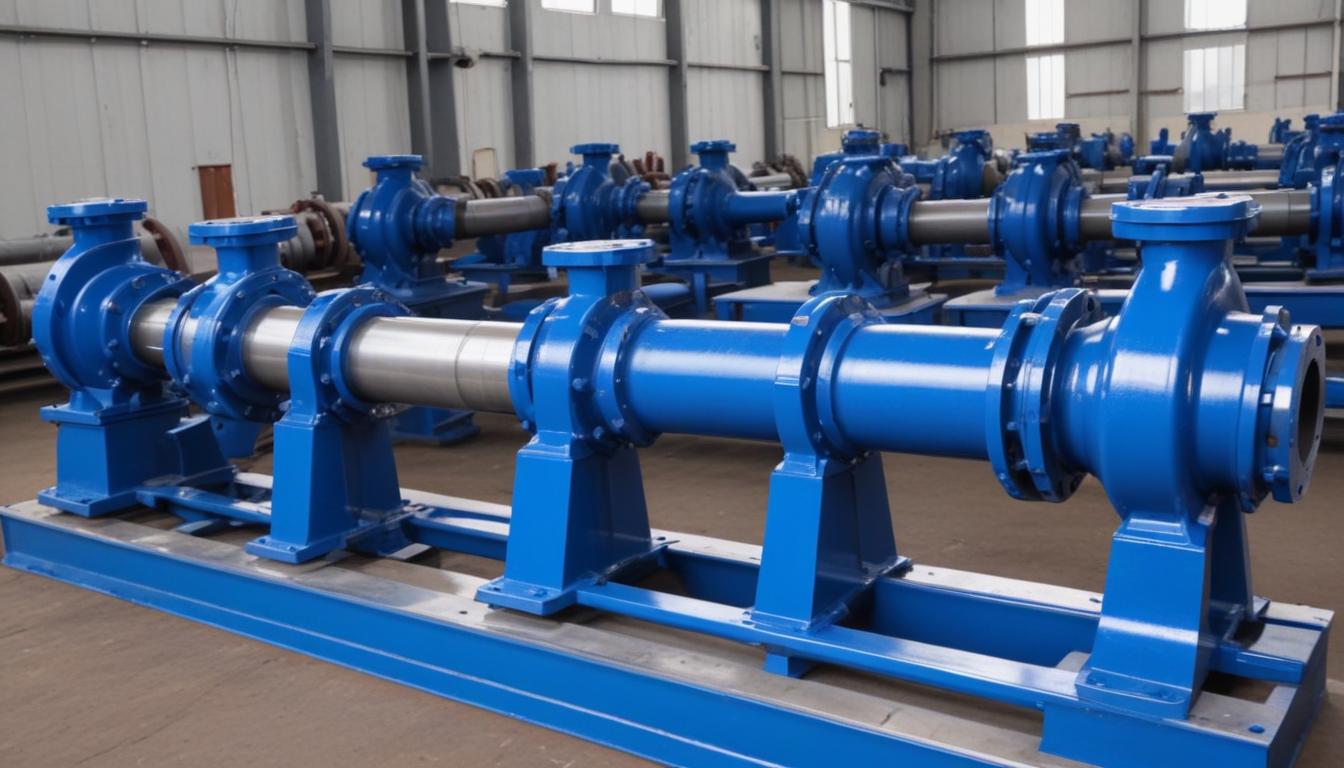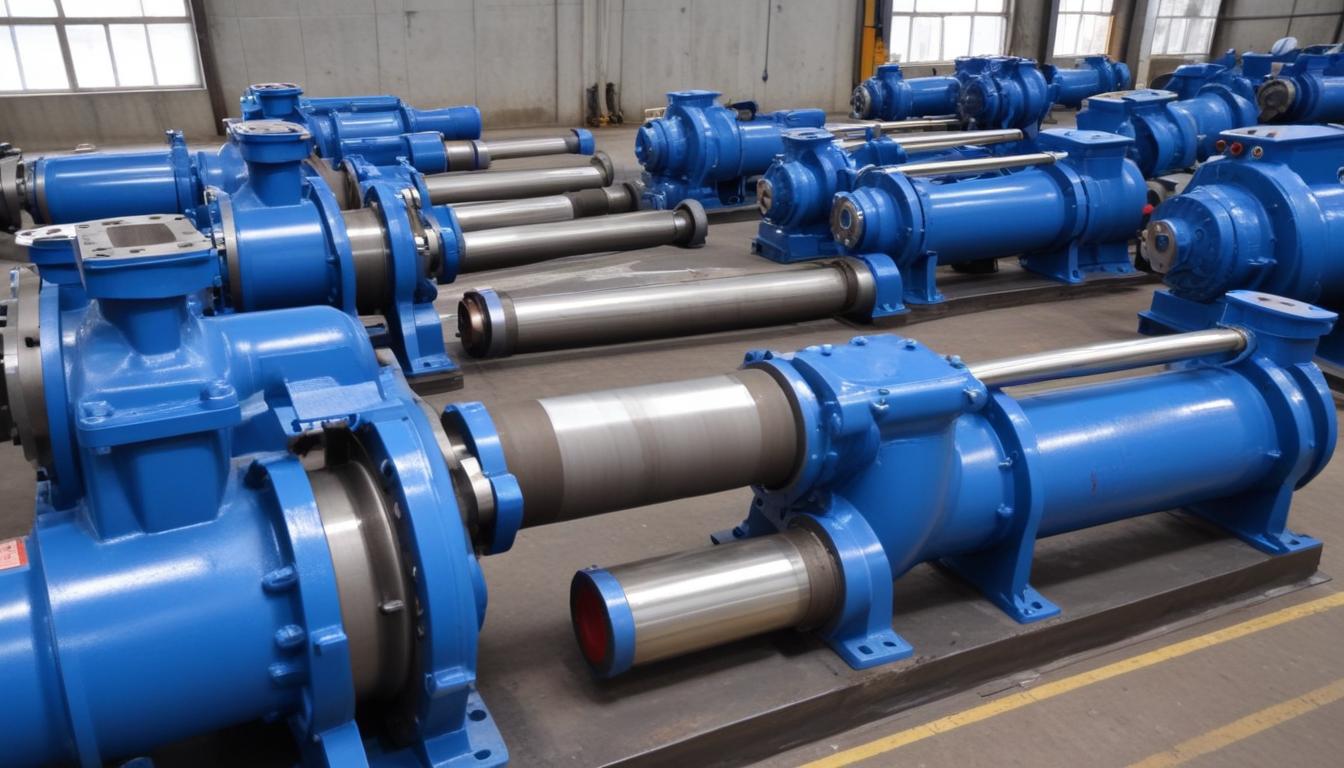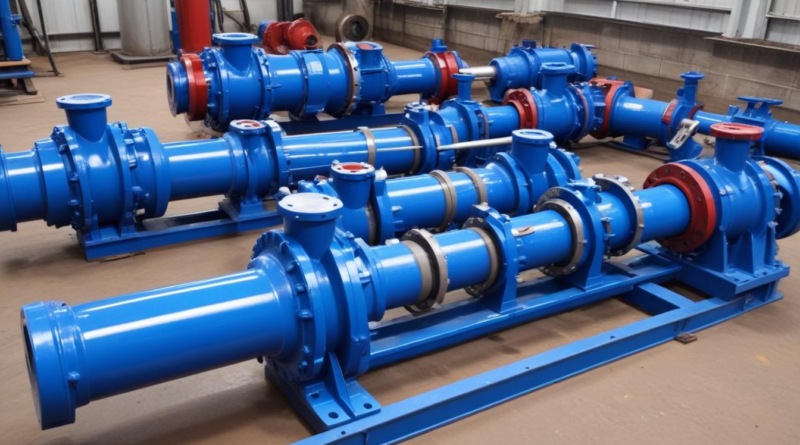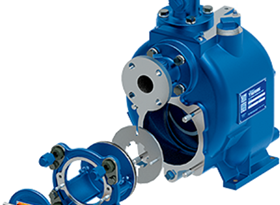Choosing the right material for your progressive cavity pumps
When selecting the appropriate materials for progressive cavity pumps, it is essential to consider several factors that can impact the pump’s performance, longevity, and suitability for specific applications. Various materials exhibit distinct properties such as strength, flexibility, and resistance to corrosion, thus influencing the overall efficiency of the pumps in different environments. A thorough understanding of these materials is crucial for engineers and pump users to make informed choices.
Material selection for progressive cavity pumps is a multifaceted process that involves analyzing the operating conditions and the characteristics of the fluids being handled. Each application may demand different material properties to maintain optimal functionality and reduce the risk of failure. The compatibility of the selected material with the pumped medium, including potential abrasion and chemical exposure, is critical for ensuring reliable operation.
Key factors influencing material selection include:
- Fluid Characteristics: Viscosity, temperature, and chemical composition of the fluid can dictate material compatibility.
- Operational Environment: Environmental conditions such as temperature extremes and exposure to corrosive elements.
- Abrasion Resistance: The potential for solid particles in the fluid to wear down the pump materials.
- Regulatory Standards: Compliance with industry regulations regarding material properties and safety.
Engineers must assess these factors to identify materials that not only withstand operational demands but also optimize the performance of progressive cavity pumps. By doing so, they can ensure the selection of materials that enhance durability, minimize maintenance costs, and improve the overall efficiency of the pumping system.
Understanding the types of materials used in progressive cavity pumps
In progressive cavity pumps, the types of materials utilized play a pivotal role in determining functionality, performance, and longevity. Each material boasts unique attributes that cater to various operational requirements. Generally, materials can be categorized into several groups based on their properties and intended applications:
- Metallic Materials: Commonly used metals include stainless steel, carbon steel, and alloys. These materials offer good strength and rigidity, making them suitable for high-pressure applications. Stainless steel, in particular, is favored for its excellent corrosion resistance, especially in harsh environments.
- Polymeric Materials: Plastics and elastomers, such as polyurethane and nitrile, are often employed for components that require flexibility and chemical resistance. These materials are ideal for applications that involve aggressive fluids or where abrasion is a concern, providing a lightweight alternative to metals.
- Composites: Advanced composite materials combine the strengths of metals and polymers, offering enhanced properties such as increased strength-to-weight ratios and superior corrosion resistance. Composites are becoming increasingly popular due to their ability to withstand challenging operational conditions.
Each material type not only affects the functionality of progressive cavity pumps but also contributes to various operational aspects:
| Material Type | Advantages | Disadvantages |
|---|---|---|
| Stainless Steel | Corrosion resistance, durability, high strength | Higher cost, can be heavy |
| Carbon Steel | Cost-effective, strong | Prone to rust without proper coating |
| Polyurethane | Excellent abrasion resistance, flexible | Limited temperature resistance |
| Nitrile | Good oil resistance, cost-effective | Poor resistance to ozone and high temperatures |
Understanding these types of materials and their respective advantages and disadvantages is essential for effective material selection. Engineers must carefully evaluate the specific requirements of their applications to choose the most suitable materials that align with the operational parameters of their progressive cavity pumps. The right material can significantly enhance performance, ensuring that pumps operate efficiently and reliably over their intended lifespan.
Factors influencing material selection

Material selection in the context of progressive cavity pumps necessitates a comprehensive evaluation of several critical factors that extend beyond base material properties. The harsh realities of different operating conditions, along with the characteristics of the fluids being handled, must be weighed carefully to ensure optimal performance and longevity of the pump system. Below are key considerations that engineers should keep in mind during the material selection process:
- Temperature Compatibility: The selected material must tolerate the fluid’s operational temperature range without compromising integrity or performance. High temperatures can lead to deformation or deterioration of certain polymers, while extreme low temperatures may embrittle materials.
- Chemical Compatibility: Understanding the chemical makeup of the fluid being pumped is crucial. Certain materials may react adversely with aggressive chemicals, leading to corrosion or degradation. Proper chemical resistance can mitigate these risks significantly.
- Abrasion Potential: In applications where fluids contain solid particles or are inherently abrasive, materials with superior abrasion resistance should be prioritized. The chosen material must withstand wear over time to prolong pump life and reduce maintenance needs.
- Pressure Requirements: Different pump applications generate varying levels of pressure. It is vital to select materials that can endure the cyclic stresses and strains exerted during operation to prevent premature failure.
- Environmental Regulations: Compliance with industry standards and legislative requirements concerning materials should also be considered. Regulatory frameworks may outline permissible material properties, particularly in industries like food processing or pharmaceuticals.
- Cost Considerations: While high-performance materials may offer enhanced characteristics, the overall cost of the material should align with the project budget. A balance between performance and economic feasibility is a fundamental aspect of the selection process.
These factors collectively influence the material selection for progressive cavity pumps, dictating the applicability and reliability of the technology in diverse environments. By thoroughly analyzing these elements, engineers can make informed choices that ensure the selected materials can withstand operational challenges while delivering efficient performance and extended service life.
Common materials and their properties
In the realm of progressive cavity pumps, the selection of materials is paramount to achieving optimal performance and durability. The materials commonly used in these pumps each possess unique characteristics that define their suitability for different applications. Understanding these properties allows engineers and pump users to make informed decisions. Here are the most prevalent materials along with their properties:
| Material | Key Properties | Typical Applications |
|---|---|---|
| Stainless Steel | Corrosion resistance, high tensile strength, thermal stability | Food and beverage processing, chemical processing, municipal waste treatment |
| Carbon Steel | Cost-effectiveness, good strength, weldability | General industrial applications, some oil and gas applications |
| Polyurethane | Excellent resilience, good abrasion resistance, flexibility | Handling slurries, applications with solid content |
| Nitrile Rubber | Good oil and chemical resistance, low cost | Oil and gas applications, some food processing uses |
| Silicone Rubber | High-temperature stability, flexibility, good chemical resistance | Pharmaceuticals, food processing under high temperatures |
| Composites | High strength-to-weight ratio, corrosion resistance, customizable | Advanced applications in aerospace, automotive, and chemical industries |
The choice of material can also significantly affect the pump’s maintenance requirements. Materials with high resistance to wear and corrosion, such as stainless steel and composites, tend to require less frequent maintenance, making them more cost-effective over the long term. Conversely, materials like carbon steel can be more susceptible to corrosion unless properly treated, which can lead to increased maintenance costs and downtime.
Moreover, the effect of temperature and fluid characteristics on material selection cannot be overstated. For instance, while stainless steel performs well under high temperatures, certain polymers like polyurethane may degrade when exposed to prolonged heat. Therefore, the compatibility of the material with both the operational environment and the pumped medium is critical.
Ultimately, selecting the correct material for progressive cavity pumps is a multi-faceted endeavor. It hinges on understanding both the materials’ inherent properties and the demanding conditions of the application. By leveraging the insights on material properties and applications, engineers can make astute material selections that bolster the reliability and performance of progressive cavity pumps across diverse operational landscapes.
Corrosion resistance and durability considerations

When considering corrosion resistance and durability for progressive cavity pumps, it is crucial to choose materials that can withstand the unique challenges presented by the pumping environment and the fluids being handled. Corrosion can significantly reduce the lifespan and effectiveness of pump components, leading to costly repairs and downtime. Therefore, engineers must prioritize materials that exhibit exemplary resistance to corrosive agents, be they chemicals, salts, or other environmental factors.
The resistance of materials to corrosion varies widely based on their composition and treatment. For instance, stainless steel, particularly of the 300 series, is popular in progressive cavity pumps due to its high chromium content that forms a passive layer of oxide, thus providing excellent corrosion resistance. However, certain environments may be highly corrosive; in such cases, the use of materials specifically designed to resist stress corrosion cracking, such as duplex stainless steel, or the incorporation of coatings can extend service life significantly.
Another aspect of durability is the material’s ability to withstand mechanical stress, including abrasion from solid particles within the fluid. For applications involving slurries or abrasive substances, materials such as polyurethane or hard-coated alloys should be considered, as they offer enhanced resistance to wear while maintaining flexibility and performance under stress.
To further guide material selection, the following factors should be evaluated:
- Material Properties: Assessing the intrinsic properties of materials, such as hardness, tensile strength, and fatigue resistance, can help predict longevity and operational viability.
- Environmental Exposure: Understanding the specific corrosive elements present in both the fluid and the operational environment (e.g., pH levels, temperature, and moisture) is key to selecting appropriate materials.
- Chemical Compatibility: It is essential to ensure that materials will not degrade or react adversely when in contact with the chemicals in the pumping medium, which could lead to leaks or pump failure.
Implementing rigorous testing protocols can also aid in selecting suitable materials. Engineers may utilize accelerated corrosion tests and comparative analyses of various materials to predict performance under expected operational conditions. Furthermore, using coatings or linings can enhance the durability of standard materials, providing a cost-effective strategy for extending the lifespan of pump components.
Ultimately, attention to corrosion resistance and durability considerations in the material selection process for progressive cavity pumps can contribute to reduced maintenance, less frequent replacements, and higher operational efficiency, making it a vital focus area for engineers and pump users alike.
Application-specific recommendations for material choice
When selecting the appropriate materials for progressive cavity pumps, it is crucial to account for application-specific requirements that can dictate the performance and reliability of the pump system. Each application presents unique challenges and operational parameters that must be addressed through careful material selection. The following recommendations are tailored to common applications of progressive cavity pumps, ensuring that the selected materials meet the demands of specific environments.
1. Food and Beverage Processing: In applications where hygiene and corrosion resistance are paramount, stainless steel is often the preferred material choice. Its excellent resistance to both corrosion and microbial growth makes it ideal for sanitary applications. Engineers should prioritize 316 stainless steel for environments with higher chloride exposure. Furthermore, when handling viscous products like creams or sauces, consider using elastomers such as food-grade nitrile or TPU for the pump elements to maintain flexibility without compromising material integrity.
2. Chemical Processing: The wide range of chemicals handled in this field necessitates selecting materials with high chemical resistance. Polypropylene or PVDF (Polyvinylidene fluoride) are suitable materials for non-metallic components due to their outstanding chemical compatibility. Additionally, when dealing with abrasive slurries or corrosive chemicals, using hard-faced alloys or specialized coatings can enhance wear resistance while ensuring long-term performance under aggressive conditions.
3. Wastewater Treatment: Given the variable nature of wastewater, polyurethane is a frequently utilized material because of its exceptional wear resistance and ability to handle solids in suspension. In addition, stainless steel components can be selected for structural parts, as their corrosion resistance allows for a longer life in harsh environments. Engineers should also ensure that the elastomers used are resistant to corrosive chemicals found in wastewater.
4. Oil and Gas Applications: In this industry, the challenges include exposure to hydrocarbons, temperature extremes, and pressures. Carbon steel accompanied by coatings can be a cost-effective solution for non-corrosive applications; however, for components that face severe corrosive challenges, duplex stainless steel or nickel alloys may be necessary. Furthermore, specialized elastomers with oil resistance, such as HNBR (Hydrogenated Nitrile Butadiene Rubber), can be employed for seals and stators.
5. Pharmaceutical Applications: The pharmaceutical industry demands stringent compliance with health regulations and exceptional material cleanliness. Silicone rubber and 316 stainless steel are commonly used in systems requiring high purity and durability. These materials not only resist degradation from sterilization processes but also ensure product quality by preventing contamination.
The successful implementation of progressive cavity pumps hinges on understanding the specific requirements of each application. By carefully considering the fluid characteristics, environmental conditions, and regulatory requirements, engineers can make informed decisions about material selection that will optimize pump performance, enhance reliability, and extend service life in their respective applications.



